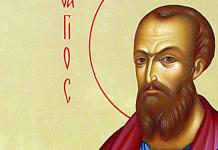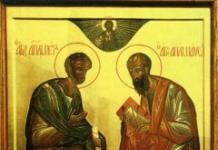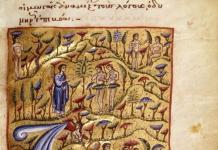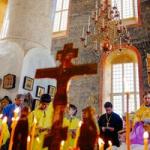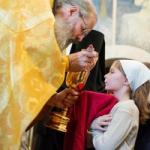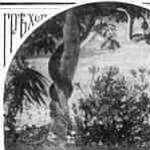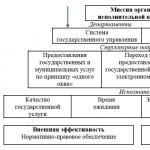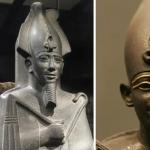This week, many were surprised by the news that a quarter of Britons who call themselves Christians do not believe in the resurrection of Christ (BBC data). For those of you planning to celebrate Easter this Sunday, these numbers may come as a shock...
For anyone reading this blog, I offer nine important things to know about the Resurrection.
1. Belief in the Resurrection is a core doctrine of the Christian faith.. If you do not believe in the Resurrection, you do not have a personal relationship with God in and through Jesus Christ.
“For if you confess with your mouth that Jesus is Lord and believe in your heart that God raised Him from the dead, you will be saved” (Rom. 10:9).
“And if Christ has not been raised, then your faith is in vain: you are still in your sins” (1 Cor. 15:17).
2. The Resurrection gives hope for eternal life to everyone who has died in Christ. The Bible teaches that since Jesus is now alive as a result of the resurrection, all who have a personal relationship with Him have the hope of eternal life with Him after death.
“But Christ has risen from the dead, the firstborn of those who have fallen asleep. For as death came through man, so also came the resurrection of the dead through man” (1 Cor. 20-22).
Jesus said, “I go to prepare a place for you. And when I go and prepare a place for you, I will come again and take you to Myself, so that where I am you also may be” (John 14:2-3).
3. The disciples of Christ, who later became His apostles, at first did not understand the meaning of the resurrection. Jesus spoke to His disciples (His followers during His earthly ministry) about the resurrection, but they did not understand this truth until He was resurrected.
“When they came down from the mountain, He commanded that they should not tell anyone what they had seen, until the Son of Man had risen from the dead. And they kept this word, asking each other what it meant to be raised from the dead” (Mark 9:9-10).
“Then some of His disciples said to one another, “What is it that He says to us: Soon you will not see Me, and again soon you will see Me, and: I am going to the Father?” (John 16:17).

4. Jewish Religious Leaders Feared the Possibility of the Resurrection. These religious leaders did not accept the teachings of Jesus because it threatened their power and undermined their religious system. They feared the risen Messiah and Savior.
“They went and set a guard at the tomb, and put a seal on the stone” (Matt. 27:62-66).
5. The resurrection of Christ became a source of great joy for the disciples and the foundation of their faith. When Jesus spoke to His disciples about His resurrection, He predicted that their grief over His death would then be replaced by a joy that no one could take away from them. The Apostle John recalled these words in his Gospel in order to call the reader to faith in Jesus.
Jesus said, “Truly, truly, I say to you, you will mourn and lament, but the world will rejoice; you will be sad, but your sorrow will turn into joy... So now you also have sorrow; but I will see you again, and your heart will rejoice, and no one will take your joy from you” (John 16:20-22).
6. The Resurrection of Christ was witnessed by eyewitnesses. Paul lists many who saw the risen Jesus.
“I remind you, brethren, of the gospel which I preached to you, which you received, in which you stood, and by which you are saved, if you keep what was taught, as I preached to you, unless you believed in vain. For I originally taught you what I myself accepted, that is, that Christ died for our sins, according to the Scriptures, and that He was buried, and that He rose again on the third day, according to the Scriptures, and that He appeared to Cephas, then to the twelve; then he appeared to more than five hundred brethren at one time, most of whom are still alive, and some have died; then he appeared to Jacob, and also to all the Apostles; and last of all he appeared to me, as to a certain monster” (1 Cor. 15:1-8).

7. The Resurrection Demonstrated that Jesus is the Son of God. Paul saw the Resurrection as proof of the divinity and Sonship of Jesus (Rom. 1:3-4).
“...about His Son, who was born of the seed of David according to the flesh, and was revealed to be the Son of God with power, according to the Spirit of holiness, through the resurrection from the dead, in Jesus Christ our Lord” (Rom. 1:3-4).
8. The Resurrection of Christ is the basis of our salvation. Jesus went to the cross because of our sins because a sacrifice was needed on which God's wrath would be poured out. And the resurrection of Christ became the basis of our justification and salvation.
Subscribe:
“... it will also be imputed to us who believe in Him who raised Jesus Christ our Lord from the dead, who was delivered for our sins and was raised again for our justification” (Rom. 4:24-25.
9. The Resurrection of Christ gives us the power to live a life that glorifies God.. The power of the Holy Spirit that raised Christ from the dead—as indicated by the fact of the Resurrection—is the same power that resides within us, giving hope for real change in our lives so that we can live a life that glorifies God.
“If the Spirit of Him who raised Jesus from the dead dwells in you, He who raised Christ from the dead will also give life to your mortal bodies through His Spirit who dwells in you” (Rom. 8:11).
“...and how exceedingly great is the greatness of His power toward us who believe, according to the working of His mighty power, which He wrought in Christ, raising Him from the dead and seating Him at His right hand in the heavens...” (Eph. 1:19-23; cf. Eph. 3 :20-21).
“...that I may know Him and the power of His resurrection” (Phil. 3:10).
Voice of Truth based on Pastor Kevin's blog
The Orthodox holiday “The Resurrection of Christ,” which is also called Great Day or Easter, is the oldest and greatest among Christian holidays, and one of the main among the twelve Orthodox holidays, which the church celebrates with special solemnity.
According to the synoptic Gospels, the crucifixion of Jesus Christ occurred on the 15th of Nisan (the first month of the year in the Jewish religious calendar). The Evangelist John, however, clarifies that Jesus died on Nisan 14, during the time when lambs were being sacrificed in the Temple for the Jewish holiday of Passover. The holiday of Passover, which translated means “to pass by,” is the Old Testament Jewish Passover, which is celebrated in honor of the exit of the Israeli people from Egyptian slavery. The name of the holiday is associated with an Angel who came to Egypt to destroy all the firstborn, but when he saw the blood of the Passover lamb on the door of a Jewish house, he passed by.
 In the Christian Church, the name “Easter” received a special understanding and began to mean the transition from death to life, from earth to Heaven. This is precisely what is expressed in the sacred hymns of the Church: “Easter, the Lord’s Easter, for from death to life and from earth to heaven, Christ God has translated us, singing a song of victory.”
In the Christian Church, the name “Easter” received a special understanding and began to mean the transition from death to life, from earth to Heaven. This is precisely what is expressed in the sacred hymns of the Church: “Easter, the Lord’s Easter, for from death to life and from earth to heaven, Christ God has translated us, singing a song of victory.”
For the first Christians, the passion of Christ, His death became hope for liberation from sins, because Christ himself becomes the Lamb of God. He, having made a majestic sacrifice, with his blood and suffering gives humanity a new chance at life in the light of the New Testament.
The description of the historical event of the Resurrection of Christ, which is present in all the Gospels, originates from the Jerusalem community. From there comes the first cry that opens Easter liturgies all over the world: “Christ is Risen!”
 According to the Gospel, the Resurrection of the Savior is a secret action of God, during which not a single person was present. Only the consequences of this event became known to the close circle of Jesus Christ - the myrrh-bearers, who first saw His death and burial, and then saw that the tomb where they laid Him became empty. And at that moment the Angel announced to them about the resurrection and sent them to tell this news to the apostles.
According to the Gospel, the Resurrection of the Savior is a secret action of God, during which not a single person was present. Only the consequences of this event became known to the close circle of Jesus Christ - the myrrh-bearers, who first saw His death and burial, and then saw that the tomb where they laid Him became empty. And at that moment the Angel announced to them about the resurrection and sent them to tell this news to the apostles.
The Feast of the Resurrection of Christ was established by the Apostolic Church and was celebrated already in those days. To designate the first and second parts of the holiday, special names were used: Easter of the Cross, that is, the Easter of suffering, and Easter of the Resurrection, that is, the Easter of the Resurrection. After the Council of Nicaea, held in 325, new names were introduced - Holy and Bright weeks, and the day of the Resurrection itself was called Easter.
In the first centuries of Christianity, Easter was not celebrated in different places at the same time. In the east, in Asia Minor churches they celebrated on the 14th day of Nisan (March), regardless of what day of the week it was. And the Western Church venerated her on the first Sunday of the spring full moon. An attempt to establish agreement on this issue between the Churches was made in the middle of the 2nd century under St. Polycarp, bishop Smirna, but to no avail.
Two different customs existed until the 1st Ecumenical Council (325). At the Council, it was decided to celebrate Easter everywhere according to the rules of the Alexandrian Church - after the spring full moon between April 4 and May 8, but that the Christian Easter should always be celebrated after the Jewish one.
Holiday traditions
Easter celebrations begin with a walk around the church, accompanied by bells. This circumambulation is a symbolic procession of the myrrh-bearing women on Sunday morning to the Holy Sepulcher.
 After the circumambulation, in front of the closed doors of the church, as in front of God’s sealed tomb, Matins begins in honor of the Resurrection of Christ. Here for the first time we hear the joyful proclamation: “Christ is risen from the dead...”, and while singing the same song, the priest opens the doors of the church with a cross as a sign that Christ’s death has opened the path to Heaven for humanity.
After the circumambulation, in front of the closed doors of the church, as in front of God’s sealed tomb, Matins begins in honor of the Resurrection of Christ. Here for the first time we hear the joyful proclamation: “Christ is risen from the dead...”, and while singing the same song, the priest opens the doors of the church with a cross as a sign that Christ’s death has opened the path to Heaven for humanity.
The most ancient Christian charters say that at the end of Sunday Matins, during the singing of the stichera of Easter, with the words “and let us embrace each other,” a mutual kissing took place, which today is called “Christification.” People greet each other: “Christ is risen! - Truly risen!
All the time throughout the entire Bright Week of the holiday, the doors in the iconostasis remain open as a sign that Christ, by his resurrection, opened the doors of the Kingdom of God to humanity.
 On Easter Day, during the holy liturgy, after the prayer behind the pulpit, the blessing of the artos is performed. "Artos" is translated from Greek as "bread". Artos is a symbol of the bread of eternal life - our Lord Jesus Christ. On the artos you can see the icon of the Resurrection. Artos stands on a throne or on a tetrapod throughout Bright Week. On Bright Saturday, after a special prayer, it is crushed and distributed to believers.
On Easter Day, during the holy liturgy, after the prayer behind the pulpit, the blessing of the artos is performed. "Artos" is translated from Greek as "bread". Artos is a symbol of the bread of eternal life - our Lord Jesus Christ. On the artos you can see the icon of the Resurrection. Artos stands on a throne or on a tetrapod throughout Bright Week. On Bright Saturday, after a special prayer, it is crushed and distributed to believers.
During the period of Pentecost, namely from the Feast of Easter to the Feast of the Descent of the Holy Spirit, they do not bow or kneel as a sign of Sunday joy. At the Council of Nicea it was proclaimed: “Because some kneel on the days of the Lord and on the days of Pentecost, then for uniformity in all dioceses, at this time offer prayers to God while standing” (Canon 20). The Sixth Ecumenical Council also made a similar decision in canon 90.
During the celebration of Easter, and sometimes throughout Bright Week, the daylight bell sounds as a sign of the victory of Jesus Christ over death and over hell.
 The Ukrainian people have a custom of blessing food on Easter. After a long fast, the Holy Church allows all kinds of food so that during the Easter holidays the faithful, along with spiritual joy, also have joy from earthly gifts. The blessing of Easter food takes place solemnly after the holy liturgy, usually in the churchyard.
The Ukrainian people have a custom of blessing food on Easter. After a long fast, the Holy Church allows all kinds of food so that during the Easter holidays the faithful, along with spiritual joy, also have joy from earthly gifts. The blessing of Easter food takes place solemnly after the holy liturgy, usually in the churchyard.
The glorious Ukrainian krashenki and pysanky, which have ancient origins, are associated with the blessing of Easter cakes. The ancient peoples had a custom according to which it was impossible to appear before a person occupying a high position in society for the first time without a gift. Reverent legends say that Mary Magdalene, preaching the science of Christ, entered the courtyard of the Roman Emperor Tiberius and gave him a gift of a red egg with the words: “Christ is risen!”, and only after that she began her preaching.  Other Christians followed her example and began giving each other Easter eggs or Easter eggs on the day of Easter.
Other Christians followed her example and began giving each other Easter eggs or Easter eggs on the day of Easter.
The egg plays such a large role in Easter customs because it has become a symbol of Christ's Resurrection. Just as new life is born from a dead shell of an egg, so Jesus Christ came out of the tomb to new life. The red egg is a symbol of our salvation through the Blood of Jesus Christ.
Various Easter activities for children and adults are associated with Easter eggs and Easter eggs.
The divine essence of the holiday
 The Resurrection of Christ is the liberation of humanity from the burden of sins, the transition from death to Life, from suffering to Love. This majestic and incomprehensible action is the indestructible foundation of the Christian faith. The resurrection of the Lord Jesus Christ from the dead is evidence that Jesus Christ is the true God and Savior.
The Resurrection of Christ is the liberation of humanity from the burden of sins, the transition from death to Life, from suffering to Love. This majestic and incomprehensible action is the indestructible foundation of the Christian faith. The resurrection of the Lord Jesus Christ from the dead is evidence that Jesus Christ is the true God and Savior.
Christ died in body, having endured great mockery and torment, both physical and spiritual. But His physical (human) manifestation is united with God the Word into a single Hypostasis. And death itself, which held human souls even for small offenses, could not have power over Him. Christ descended into hell to conquer death itself and rose again on the third day, freeing Adam and the entire human race from the slavery of sin.
Because of the first sin of Adam, the bodily beginning of the human race, humanity submitted to the law of death, and Jesus Christ became the Liberator of humanity, showing the victory of the spirit over the body. Jesus Christ established the New Covenant between humanity and God by making a Majestic sacrifice before Divine justice. Our Lord Jesus Christ, by His Resurrection, also made people conquerors over death and heirs of the Kingdom of Heaven thanks to saving faith in our Lord Jesus Christ. Therefore, in due time, what happened to Jesus Christ will also happen to all humanity. The Apostle Paul clearly and confidently testifies: “As in Adam all die, so in Christ all shall live” (1 Cor. XV:22).
The light of God's Resurrection on this day touches every believing soul, giving indescribable joy, love and new hope, igniting vital faith in the victory of the Spirit over the flesh. The New Testament, the Testament of Love, given to us by God, connects earth and Heaven, bringing the Kingdom of Heaven closer to human hearts, opening the doors to the Kingdom of Heaven through our Savior Jesus Christ.

1 And after the Sabbath had passed, at dawn of the first day of the week, Mary Magdalene and the other Mary came to see the tomb.
2 And behold, there was a great earthquake, for the Angel of the Lord came down from heaven and came and rolled away the stone from the door of the tomb and sat on it;
3 His appearance was like lightning, and his raiment was white as snow;
4 Fearful of him, those who guarded them trembled and became as if they were dead;
5 The angel turned his speech to the women and said, “Do not be afraid, for I know that you are looking for Jesus who was crucified;
6 He is not here - He has risen, as He said. Come, see the place where the Lord lay,
7 And go quickly and tell His disciples that He has risen from the dead and is going before you into Galilee; you will see Him there. Here, I told you.
8 And they hastily came out of the tomb and ran with fear and great joy to tell His disciples.
9 And as they went to tell his disciples, behold, Jesus met them and said, Rejoice! And they came, grabbed His feet and worshiped Him.
10 Then Jesus said to them, “Do not be afraid; go, tell my brothers to go to Galilee, and there they will see me.
11 And as they went on, some of the guard entered the city and declared to the chief priests everything that had happened.
12 And they, having gathered together with the elders and taken counsel, gave enough money to the soldiers,
13 And they said: Say that His disciples came by night and stole Him while we were sleeping;
14 And if word of this reaches the governor, we will convince him and save you from trouble.
15 They took the money and did as they had been taught; and this word spread among the Jews to this day.
16 So the eleven disciples went to Galilee, to the mountain where Jesus commanded them,
17 And when they saw Him, they worshiped Him, but others doubted.
18 And Jesus came near and said to them, “All authority in heaven and on earth has been given to Me.”
19 Go therefore and teach all nations, baptizing them in the name of the Father and the Son and the Holy Spirit,
20 Teaching them to observe everything that I have commanded you; and lo, I am with you always, even to the end of the age. Amen.
Resurrection of Christ
He ascended on high, captivated captivity and gave gifts to people.
And what does “ascended” mean, if not that He also descended?
first to the underworld of the earth? He is the Descendant
and came out above all the heavens to fill all
(Eph. 4:8-10).
If Christ is not risen, then our faith is in vain
(1 Cor. 15, 17).

The “great and blessed Saturday” has come: the Only Begotten Son of God, who humbled Himself to death on the cross (Phil. 2:8) and gave His spirit into the hands of the Father (Luke 23:46) “having subsisted in the flesh, rested from all His works.” Recently they saw Him humiliated, but now His rest is an honor.
But there was no peace in Jerusalem: some were deprived of it by anger, and others by heavy, oppressive grief.
Enemies did not cease to pursue the crucified Truth even in the tomb, “where it was brought down by human iniquities and the just judgment of God”; the hands that killed the Savior sealed His tomb; fierce hatred and unbelief guarded its integrity (Matthew 27:62-66).
And at this time, the disciples of the Lord with His Most Pure Mother indulged in great sorrow. All the apostles, except for the beloved disciple (John 19:26), left their Teacher, and now they learn from others about the last days of His life - how He endured reproaches, how He suffered, how He cried out to His Father amid the terrible torment of the cross: “ My God, My God! Why have you forsaken me” (Matthew 27:46)! These stories tore their souls with sad bewilderment: “Who was He? We saw His wondrous miracles that spoke of divine omnipotence, we heard His word filled with unknown power and inexplicable love - and now His enemies defeated Him, and even God, Whom He called His Father, abandoned Him! He died a shameful death on the cross, and we hoped that He was the One who should deliver Israel (Luke 24: 1). The Apostle Peter wept bitterly when he denied Him whom he promised to love to death (Mark 14:27-31; 66-72). But the Mother of the Lord shed incomparably more bitter tears: a sharp weapon pierced Her soul (Luke 2:35) and from her heart overflowing with sorrow inconsolable lamentations burst out: “Where, My Son and God, is the annunciation that Gabriel told Me? He called You King, Son and God most high, and now I see You, My sweet light, naked and ulcerated dead.” “Behold My light, hope, life and My God went out on the cross. From now on, joy will never touch Me - My joy and light have entered the grave; but I will not leave Him... - I will die here and be buried with Him!” Hearing the cries and lamentations of His Mother, the God-Man mysteriously spoke to Her heart from the grave: “Oh, how did the abyss of generosity hide from You?! for although I deigned to die to save My creation, yet, as the God of heaven and earth, I will rise again and exalt You.”
So some with longing, and others with gloating, looked at the silent, sealed and surrounded by guards tomb of the Redeemer. But what was happening at that time behind the doors of the life-giving tomb was hidden from the world. Only the Most Pure Body of the Lord rested here; with His deified soul He descended into the abyss (Rom. 10:7); into the very stronghold of the primordial murderer (John 8:44), where for centuries the souls of earthly beings, deprived of heavenly bliss for the sin of their ancestors, languished. “Christ,” says the holy Apostle Peter, “to lead us to God, once suffered for our sins, the righteous for the unjust, being put to death in the flesh, but made alive in the Spirit, by which He came down and preached with the spirit that was in prison” (1 Pet. 3, 18-19). “The deified soul of Christ descends into hell so that just as the Sun of righteousness may shine for those living on earth, so for those sitting under the earth in darkness and the shadow of death the light may shine, so that Christ may preach the gospel of peace to both those on earth and those in hell, liberation for the captives, recovery of sight for the blind, and for those who believed he was the author of eternal salvation, and for those who did not believe the accuser of unbelief” (St. John of Damascus).
The day of Christ has come (John 8:56) for those who from afar, separated by millennia and centuries, only saw it in the shadow of prototypes and prophecies. And so, with the preaching of the Gospel (St. Clement of Alexandria) and the remission of sins (St. Irenaeus), the Lord descends into hell. The host of forefathers and prophets met the Lord Jesus with the delight of inexplicable joy. Here, behind the gloomy gates of “dull hell” (St. Gregory the Theologian), the Savior “sees Adam shedding tears; sees Abel covered with blood like purple; sees Noah adorned with righteousness; sees Shem and Japheth, adorned with respect for their father; sees Abraham crowned with all sorts of virtues; sees Lot laboring in hospitality; sees Isaac blooming with constancy; He sees Jacob sitting with patience; sees Job like a fighter prepared for battle; sees Phinehas armed with a spear; sees Moses dedicated by God's fingers. He comes to Navin, and he is surrounded by an army; approaches Samuel, and he shines with the anointing of kings; goes to David, and he is buried with the psalter; comes to Elisha, and he is clothed with mantle. Isaiah joyfully shows the head cut off from him by the saw. Jonah is famous for saving the Ninevites. Jeremiah is anointed with mud from the pit. The eyes of Ezekiel are luminous from terrible visions. The kisses of lions are still fresh on the Daniils’ feet. The bodies of those in the oven sparkle with fire. The Maccabean squad is surrounded by instruments of torment. The head of the Baptist shines with beheading. He also sees holy women who have not yielded to their husbands in anything: he sees Sarah, shining with the Abrahamic faith; sees Rebekah thriving with beneficial drink from the waterpot; sees Rachel, radiant with chastity in marriage; sees the mother of strongholds opposing the tormentor, walled by seven sons; sees every righteous man, looks at every prophet - and preaches: “Behold Az!” (St. Ephraim the Syrian).
Hell “trembled at the meeting” with the second Adam (1 Cor. 15:45-48), whose plagues demonstrated omnipotence, “and perished from the menacing gaze.” The “eternal faiths” of hell were crushed. The dominion of death and the devil ended (Heb. 2:14): “The Holy and True One, who has the key of David” (Apoc. 3:7), opened for believers the doors of paradise, imprisoned by the sins of their forefathers, and, accompanied by a host of the redeemed, entered “heaven itself.” ”(Heb. 9:24). “All the righteous who were consumed by death were redeemed, and after this each of the righteous said: “Death! Where is your sting? Hell! Where is your victory? (1 Cor. 15:55). We were redeemed by the Victorious One.” (St. Cyril of Jerusalem).
Two days have passed since the death of the Lord Jesus on Calvary... A feeling of restless malice stirred more strongly in the souls of the deicides, who firmly remembered the Savior’s prediction about the resurrection on the third day (Matthew 27:63); in the souls of Christ’s disciples, its dawn lit a ray of vague hope for the manifestation of the power of Divine omnipotence over their dead and buried Teacher (Luke 24:24). But indifferently, alien to malice and hope, the soldiers stood guard at the tomb, where the Hope of all creation was buried (Rom. 8:19).
In the silence of the deep morning, amid the general peace of nature, “Truth shone from the earth” (Ps. 84:12), the God-man rose “from the sealed tomb” (St. Isidore Pelusiot), when “seals and stone lay on him” (St. John Chrysostom). There were no witnesses to that greatest miracle, not yet seen by the world - they were not needed: the entire subsequent history of the Church of Christ is an indisputable and silent witness to the truth of the Resurrection.
The soldiers guarding the tomb were eyewitnesses of the events that had already followed the Resurrection of the Lord, which He was pleased to clothe with sacred mystery. They stood calmly under the shade of olive trees, carefully peering into the pre-dawn darkness that surrounded them. Suddenly they felt that the earth shook and, like lightning, cutting through the air, an extraordinary light shone - then an angel of God descended from heaven, approached the tomb, rolled away the stone from it, and sat on it (Matthew 28: 2-3). Thus, “the seal placed by unbelief on the cold tomb of the Lord melted from the fire of the Divinity hidden in it; the heavy stone of temptation that had covered him fell and only struck down the stiff-necked Jews and the Hellenic arrogance.” (Metropolitan Philaret of Moscow). With the light of his appearance, the angel terrified the soldiers: “they trembled with fear and became like dead men” (Matthew 28:4). The earthly guard at the tomb of the risen Lord ended, giving way to the heavenly guard - the luminous messengers of the all-joyful resurrection.
Christ is risen! - and for the entire universe, true spring began, a bright, joyful morning of new life. The Resurrection of the Lord Jesus is the first real victory of life over death; if previously there were victories, they were incomplete, temporary, after which death again asserted its real dominion over life. Nature fought against death, calling, according to the commandment of God (Genesis 1:22), new lives to replace the extinct ones. But for what? So that they disappear again, be replaced by others, which, in turn, will be replaced by third ones, etc. The life of nature, therefore, is nothing more than a motley, bright cover on a constantly decaying corpse, woven from many fleeting mortal lives. The heroes of human thought, the great sages of the East and West, also fought death, but they did not defeat it: their lot, like all other people, was death, after which they did not resurrect. People of great moral power, for example, the Old Testament righteous, were also powerless before death: along with the villains, death brought them to the dark Sheol or the underworld.
The final victory over death could not be won until its source in the world was destroyed - sin, which introduced division into it. Sin bound the human spirit with passions and thereby disrupted the correct relationship between it and the body: the latter, from an obedient instrument for the activity of the godlike human spirit, turned, thanks to sin, into an insurmountable obstacle on the path to moral perfection. The fight against sin without Christ is impossible for a person; it only leads him to the consciousness of his powerlessness, tearing out from his soul a mournful cry: “Poor man that I am! Who will deliver me from this body of death? (Rom. 7:7-24)
And so, in a world conquered by sin and death inextricably linked with it (1 Cor. 15:56), “when the fullness of time had come” (Gal. 4:4), the God-man Jesus Christ appeared for its salvation, fully fulfilling the will of God in His life . His entire earthly life was a free and arbitrary feat of self-abasement, undertaken to complete the work entrusted to Him by the Father (John 17:4). The hero of our salvation “was tempted in all points like us, yet without sin” (Heb. 4:15). Therefore, death, like its prince, had nothing for themselves in Him (John 14:30). He defeated them. They were powerless before the boundless morally free spiritual power in Christ, and the Lord Jesus rose again as a spirit, forever incarnate, uniting with the fullness of the inner spiritual being and all the positive aspects of bodily existence without its external limitations. Death had no power not only over the spirit, but also over the body of Christ - “his flesh did not see corruption” (Ps. 15:10; Acts 2:31). “By the soul of God the power of death was destroyed, the resurrection from hell was accomplished and preached to souls, and by the body of Christ corruption was brought into inactivity and incorruption was revealed from the grave” (St. Athanasius of Alexandria). As the Son of Man, obedient to His Father until death on the cross, the Lord Jesus Christ was resurrected “by the glory of the Father” (Rom. 6:4), by the action of His omnipotence (Acts 2:24; 4:15; Rom. 8:11; 2 Cor. 13:4), and how the Son of God, the eternal Word, Himself returned His deified soul to a glorified body (John 10:17-18).
The Resurrection, crowning the life of the Lord Jesus as the God-man, also crowns His feat as the Messiah - the Savior of the world.

It reborn the apostles, turning fearful fishermen into selfless preachers of Christ, who carried the word of the gospel, according to the commandment of the Teacher, from Jerusalem “to the ends of the earth” (Acts 1:8). When the Lord was taken in the Garden of Gethsemane by messengers from the high priests and elders of the people, the disciples fled; like sheep without a shepherd (Mark 14:27), they scattered in despair and horror, and even the stone of faith - St. ap. Peter (Matthew 16:18) was shaken “by the meaningless words of the slave girl, like a leaf from the wind.” (Filaret, Metropolitan of Moscow.). They expected that the Messiah would apparently open His glorious kingdom of Israel on earth. But the cross destroyed these hopes, shattered their theocratic dreams. In the eyes of Christ's disciples, like all people of that time, the cross was the most terrible and shameful of all that a person could experience in his life; he was a sign of such a terrible curse that their Teacher himself grieved and grieved before him until he sweated blood. Golgotha with its torment eclipsed in the souls of the apostles faith in Christ as the Messiah, leaving them faith in Him as a prophet, “Who was mighty in deed and word before God and all the people” (Luke 24:19). But Christ rose again, and the cross shone in their eyes with the light of unfading glory; the plagues revealed divine omnipotence and the tomb became the cradle of the indestructible faith that death has been defeated, that there is eternal life. They go out into the world preaching about Christ crucified and risen, enduring persecution and deprivation. How truly thorny was the path of the evangelists of Christ in the world, the Apostle of the tongues describes: “I,” he says, “was in labor, immensely in wounds, even in prisons and many times at the point of death. Five times the Jews gave me forty stripes, minus one. Three times I was beaten with sticks, once I was stoned, three times I was shipwrecked, and spent a night and a day in the depths of the sea. Many times I traveled, in dangers on rivers, in dangers from robbers, in dangers from fellow tribesmen, in dangers from pagans. In labor and in exhaustion, often in watching, in hunger and thirst, often in fasting, in cold and nakedness” (2 Cor. 11: 23-27). What supported them during such trials, turning the very sorrows into joy, reproach into honor (Acts 5: 10-41)? They lived by faith “that He who raised the Lord Jesus will also raise them up through Jesus” (2 Cor. 4:14). And by the power of this faith they conquered the world, brought to the foot of the cross those to whom “the word of the cross” (1 Cor. 1:18) seemed temptation and madness (1 Cor. 1:23).
They realized that only in the risen Christ could they find satisfaction to the deepest needs of the human spirit. People are exhausted by sin and hunger for righteousness, but Christ was “delivered for our sins and rose again for our justification” (Rom. 4:25). People languish under the joyless yoke of the law and thirst for grace-filled freedom - having killed the offspring of the law - sin - by His death (Rom. 7:9) and defeating Him by His resurrection (1 Cor. 15:25), the Lord Jesus Christ opened the path to true freedom for His followers (John 8:36) and replaced the heavy, unbearable yoke of the harsh law with the good and light burden of His teaching (Matthew 11:30). People fear death, but Christ “has risen from the dead, the firstborn of those who died” (1 Cor. 15:20). By His resurrection, the Lord Jesus Christ opens the doors of much-desired immortality for man. For him now death can no longer be terrible if he believes in Christ, assimilates by faith His righteousness, His eternal life, His spirit (Rom. 8:9-11; Gal. 6:8), if he lives in Christ, then and will live with Him (John 14:19), preserving not only the soul, but also the body. Christ in His resurrection acquired glorification for His humanity, and at the same time acquired the hope of glorification for our entire humanity. There, where from eternity He abided and abides as God, He entered as the God-man with soul and body. In the resurrection of the God-man we therefore have untrue evidence that we too will be resurrected, and certainly with a body. Let's not ask how this will happen? If the Lord Jesus resurrected, elevated, and enthroned His faith, which in His very person was cast down into the grave and brought down to hell, then we cannot doubt that through Him He will justify our faith in the resurrection. Otherwise, Christians would be the most miserable people on earth (1 Cor. 15:19); A Christian is a temporary guest, a wanderer and a stranger on earth, who is inevitably accompanied by anger and hatred from the majority of those around him. Suffering is as inevitable in his life as in the life of the Savior (1 Pet. 2:21). But Christ rose again and through this founded our hope deeper than the present world and raised it above the earth: “If the Spirit of Him who raised Jesus from the dead lives in you, then He who raised Christ from the dead will also give life to your mortal bodies through His Spirit who dwells in you.” (Rom. 8:11)
More than one person is burdened with sin and longs for immortality: a vague and unclear desire for deliverance from evil and the desire for immortality is inherent in all nature; she, brought from the present path of development by the Fall of man, suffers and languishes (Rom. 8:20-22), awaiting that great day when “the last enemy will destroy death” (1 Cor. 15:26), when the risen Son of Man “and He himself will submit to Him who put all things in subjection, so that God may be all in all” (1 Cor. 15:28). Then the kingdom of glory will come, access to which Christ opened with glory to the whole world.
![]()
1. Service led. Saturday morning can. paragraph 4, trop. 1, stichera on praise, 2 glory.
2. Service velik, heel, vech. canon. paragraph 7, trop. 1, paragraph 3, and now; paragraph 5, trop. 1; can. item 9, glory.^
3. Service led. Sat. morning can. paragraph 4, trop. 3.
4. Service led. Sat. morning can. paragraph 4, trop. 3.
5. Service of St. Easter morning can. item 6, irmos.
6. The Church remembers Christ’s presence in the body in the tomb, the descent of the soul into hell, and being on the throne with the Father and the Spirit on Holy Saturday. Shedding tears of love and gratitude to Him who laid down His life for His friends and enemies, His body resting in the tomb, the Church calls everyone and everything to the holiest and most precious tomb - the hope of all languages, calls heaven and earth, angels and men to it, surrounds it the holy cloud of ancient witnesses who have seen it for thousands of years, and the council of New Testament heralds, here, before the Crucified One, as if giving an account in their worldwide preaching about His redemptive cross, death and resurrection. The entire service of Holy Saturday represents a wonderful combination of the most opposite feelings - sorrow and joy, grief and joy, tears and bright jubilation. At Matins, funeral chanting is performed over the Divine Dead. It consists of the 17th kathisma (118 psalms), prophetically pre-depicting the suffering life of the Savior on earth, called “blameless” and divided into 3 articles (or stations). To each verse of the kathisma there are added gentle chants or “praises” to the deceased and buried Lord. As a harbinger of the Never-Evening Light that is about to rise from the grave, believers stand with lit candles. After the great doxology, a procession with the shroud takes place around the temple, vividly and clearly transferring our thoughts and feelings to the time when Joseph and Nicodemus, having forgotten all fear of the host of the Jews, with caring love, with unshakable devotion, gave the last honor to the Crucified One, His Most Pure Body “I wrapped it in a clean shroud” and “laid it in a new tomb.” The Liturgy (of St. Basil the Great) is the conclusion of the passionate service and the immediate pre-celebration or forerunner of Easter. After the small entrance, 15 proverbs are read, which contain almost all the main prophecies and prototypes relating to the person of Jesus Christ, who crowned the great work of redemption with His glorious resurrection. After reading the apostle, while singing “Rise Up, God,” the dark clothes of the throne and clergy are changed to light ones, and the deacon, like a bright angel, the first witness and messenger of the resurrection of Christ, proclaims this all-joyful Gospel gospel. St. heard the first news of the resurrection from an angel. myrrh-bearing wife. Like them, who met the risen Lord outside Jerusalem, we also perform a procession of the cross before Easter Matins around the temple. At the beginning of the canon and each of its songs, a priest with a cross and candles performs incense for the entire church, in commemoration of the repeated appearances of the Lord after the resurrection. The joyful Easter greeting reminds us of the state of the apostles (Luke 24:14-34), in which, when the news of the resurrection of Christ suddenly broke, they asked one another with joyful delight: “Christ is risen!” and they answered one another: “Truly he is risen.” Mutual kissing is an expression of love and reconciliation with each other, in memory of our universal forgiveness and reconciliation with God, the death and resurrection of Jesus Christ. The red egg serves as a symbol of the resurrection of Christ and our rebirth into the future life. Just as from an egg, from under a dead shell, life is born, which was completely hidden, so Christ, who lay in the tomb like a dead man, rose from this abode of death and corruption. Just as a living being is born from an egg and begins to live a full life when it is freed from the shell containing its embryo, so at the second coming of Christ to earth, we, having thrown away everything corruptible here, where the name is already the embryo and the beginning of eternal existence, by the power of resurrection Christ, let us be reborn and rise to another life. An egg painted with red paint reminds us that our new life was acquired by the pure blood of Jesus Christ. The custom of mutual exchange of eggs owes its origin to St. Mary Magdalene, who, presenting herself to Emperor Tiberius, presented him with a red egg with the greeting “Christ is Risen.” The Easter service and church rituals are especially solemn, imbued with a single feeling of joy and show the believer everything that is mysterious, lofty and saving for the soul in Christianity, bright, joyful and comforting for the heart.
Everyone knows the story associated with the Resurrection of Jesus, but few know the details of this event, although the holiday of the Resurrection of Jesus Christ is the main one for Christians.
It is in honor of the Resurrection of Christ that all Christians celebrate Easter for forty days.
What sources describe the events associated with the Resurrection of Jesus Christ?
The main sources that describe the events associated with the Resurrection of Jesus:
— Gospel of Matthew. Chapters 27, 28
— Gospel of Mark. Chapters 15, 16
- Gospel of Luke. Chapter 24
The word Gospel is translated from Greek as “good news” about the coming of the Kingdom of God.
Resurrection of Jesus Christ - Gospel according to Mark
The story of Jesus' resurrection began with his trial and crucifixion on the Friday before Passover.

Crucifixion of Jesus Christ
Jesus, crucified on the cross, died about three hours after lunch.
Mary Magdalene, Mary the mother of Christ and Salome and other disciples of Christ were present during the execution.

In order not to overshadow the Jewish holiday of Passover (Easter), the Jewish high priests and Pontius Pilate instructed one of their high priests, a rich man from the city of Arimathea, named Joseph, to take the body of Jesus and bury him. According to the Bible, Joseph and his assistant removed Jesus' body from the cross and buried it in Joseph's crypt.
But most likely, given Joseph’s rank, and he was one of the leaders of the Sanidrin, all these actions were carried out not by him personally, but by a funeral team from the local guard, but under his leadership.
It is interesting that none of the disciples of Jesus, neither Mary Magdalene nor the mother of Jesus took part in the funeral of the Lord.

Jesus Christ was buried in a similar grave
Having removed the body of Jesus from the cross, Joseph wrapped a shroud around Christ and buried Jesus in a cave that evening, then rolled a stone to the entrance to the cave and returned to Jerusalem.
Mary Magdalene and his mother Mary watched from afar where Jesus was buried.
The cave where Jesus was buried was in Joseph's garden, next to Golgotha, where Christ was crucified.
The next morning, remembering Jesus' prediction that he would rise on the third day, the high priests went to Pilate and asked him to place a guard at the cave so that Christ's followers could not secretly steal Jesus' body.
To guard the cave, Pontius Pilate assigned guards and ordered it (the cave) to be sealed.

Myrrh-Bearing Women
On the third day after the funeral of Jesus, early Sunday morning, Mary Magdalene and the mother of Christ Mary of James, having bought aromatic oils, went to the cave to anoint the body of the deceased.
Approaching the cave, the women were worried about who would move the heavy stone that was covering the entrance to the cave.
But when they approached the cave, they were surprised to find that there were no guards who were supposed to guard the cave, and the stone covering the entrance had been rolled away.

Resurrection of Jesus Christ. Angel of the Lord
When the women entered the cave, they saw that the body of Christ was not there, and on the right side of the bed was sitting a young man dressed in white clothes.
The women were frightened and froze, but the young man immediately turned to them:
“You are looking for Jesus of Nazareth, crucified; He has risen, He is not here. This is the place where He was laid. But go, tell His disciples and Peter that He is going before you to Galilee; There you will see Him, just as He told you."
The frightened women ran out of the cave and returned to Jerusalem, but, overcome with horror, they did not tell anyone anything, neither about the disappearance of the body, nor about the young man in white robes.
However, just as Jesus predicted, he rose again early on Sunday morning.

The first person to whom he appeared was Mary Magdalene.
Appearing before Mary Magdalene, he cast out seven demons from her.
After which Mary Magdalene went to the disciples of Jesus and told them that Jesus had risen and that she had seen Him alive, but the disciples did not believe Mary’s story.
Then Jesus appeared in another form to two of the disciples on the road.

They told about the meeting with the Teacher, but the rest of the students again did not believe them either.

Then in the evening Jesus appeared to the remaining eleven of his disciples and reproached them for not believing in his resurrection and said to them:
“Go into all the world and preach the gospel to every creature. Whoever believes and is baptized will be saved; and whoever does not believe will be condemned. These signs will accompany those who believe: in My name they will cast out demons; they will speak in new tongues; they will take snakes; and if they drink anything deadly, it will not harm them; They will lay hands on the sick, and they will recover."
After the conversation with the disciples, Jesus went to heaven and sat down at the right hand of God, and the disciples went to preach.

This concludes the story of the resurrection of Jesus in the Gospel of Mark.
Resurrection of Jesus Christ - Gospel of Matthew
The Gospel of Matthew tells about the events associated with the Resurrection of Jesus Christ with slightly different details than the Gospel according to Mark.
In the Gospel of Matthew there are earthquakes, a solar eclipse, and the resurrection of the dead:

“Jesus cried out again with a loud voice and gave up the ghost. And behold, the curtain of the temple was torn in two, from top to bottom; and the earth shook; and the stones dissipated; and the tombs were opened; and many bodies of the saints who had fallen asleep were resurrected, and coming out of the tombs after His resurrection, they entered the holy city and appeared to many.”
But near the cave, events are already happening somewhat differently.
When Mary, the mother of James and Josiah (mother of Christ), and the mother of the sons of Zebedee approached the cave, a great earthquake occurred due to the fact that the Angel of the Lord who descended from heaven came, rolled away the stone from the door of the tomb and sat on it:
“His appearance was like lightning, and his clothing was white as snow.”

Horror gripped everyone: the guards guarding the cave and the women.
The angel turned to the women and said:
“Do not be afraid, for I know that you are looking for Jesus who was crucified; He is not here - He has risen, as He said. Come, see the place where the Lord lay, and go quickly, tell His disciples that He has risen from the dead and is going ahead of you to Galilee; you will see Him there"
The women, making sure that Jesus’ deathbed was empty, went back to Jerusalem to tell the apostles about the resurrection of the Teacher.
Eleven disciples went to Galilee to meet the Teacher there, on the mountain.
Not all the disciples believed that their teacher Jesus was before them.
As Jesus approached, he addressed his disciples:
“All authority in heaven and on earth is mine. Go therefore and make disciples of all nations, baptizing them in the name of the Father and the Son and the Holy Spirit, teaching them to observe everything that I have commanded you; and lo, I am with you always, even to the end of the age.”
This concludes the story of the resurrection of Jesus in the Gospel of Matthew.
Resurrection of Jesus Christ - Gospel of Luke
In the Gospel of Luke in the 24th chapter, the women also on Sunday morning came to the cave to the tomb of Christ with prepared spices and also found the stone rolled away from the entrance to the cave.
But when they entered the cave, not a young man appeared before them, but two men in shining clothes.

They, just like the Gospels of Matthew and Mark, told them that Jesus had risen and was waiting for them in Galilee,
But even here the women did not believe the messengers.
However, in the Gospel of Luke, the Apostle Peter is present in the cave, who approaches the Holy Sepulcher and sees only the linens lying there.

The following describes the events when two disciples meet Jesus on the road and do not recognize him for a long time, and only after he reclined with them and broke bread with them did they realize that they had spent the whole day in the company of Jesus:
“And as He reclined with them, He took bread, blessed it, broke it, and gave it to them. Then their eyes were opened and they recognized Him. But He became invisible to them."
Further, upon returning to Jerusalem, they found together the eleven Apostles who said that the Lord had truly risen and appeared to Simon. And they told about what had happened on the way, and how He was recognized by them in the breaking of bread.
And at that moment Jesus himself stood in the midst of them and said to them:
"Peace to you"
The apostles were confused and afraid, thinking that they saw a spirit.
But Jesus convinced them that he was their blood, and then he ate baked fish and honeycomb with them.
The disciples bowed to Jesus and returned to Jerusalem in a festive mood.
This concludes the story of the Resurrection of Jesus in the Gospel of Luke.
Are there any records of references to the Ascension of the Lord in the works of eyewitnesses of Christ?
No, in the works of eyewitnesses of Christ there is not a single record where there would be any mention of the Ascension of the Lord. All references to the Ascension of the Lord were not written by eyewitnesses and in a later period.
(16 votes: 4.6 out of 5)- Theological-liturgical dictionary
- Josh McDowell
- St.
Resurrection of Christ- 1) the reunion of the Soul with His Body, which followed on the third day after His death (according to human nature); Christ's victory over death; an event that constituted the content of one of the main truths (); All four evangelists (), (), (), () talk about it; 2) the main subject of the Feast of Christian Feasts, the very first Christian holiday (also called).
The body of Jesus Christ dies and the soul descends to hell. But the body and soul of Jesus Christ are united with God the Word, the Second Hypostasis. He possesses soul and body as being of one essence with us by human nature. But He is consubstantial with God Himself, abiding within the Uncreated Life of the Trinitarian Deity. There is no human personality in Him, for instead of it the Face of the Divine is the Divine Word. Therefore, the soul and body of Christ cannot be completely separated. They are united again in the resurrected man. “He dies, giving life, destroying by His death. He is buried, but rises again. He descends to hell, but brings souls out of there,” says St. . According to St. , when human nature in the Incarnate God was moved to the separation of soul and body, He, as the uncreated Creator of soul and body, again “conjugated what was divided, brought what was dissolved into indissoluble unity.”
Death has no power over the incarnate God: “it was impossible for death to restrain Him” (). As St. says , He Himself allowed death to hold Himself back. “He did not leave His temple, the body, in a dead state for long, but only after showing it dead from the attack of death on it, He immediately resurrected it on the third day, taking with Him the sign of victory over death, that is, the incorruptibility manifested in the body and non-involvement in suffering, teaches St. . “He could have raised the body at the very moment of death and shown it alive again.” “In the mysterious “three days of death,” the incorruptible body of the Lord is transformed into the body of glory, clothed with power and light,” says. – And the Lord rises from the dead, just as the Bridegroom comes from the tomb... This is accomplished by the power of God, just as by the power of God the general resurrection will be accomplished on the last day. And in the resurrection the incarnation is fulfilled as the manifestation of Life in human nature.”
